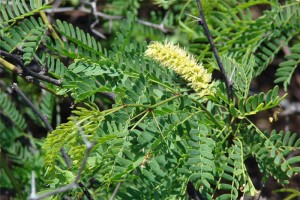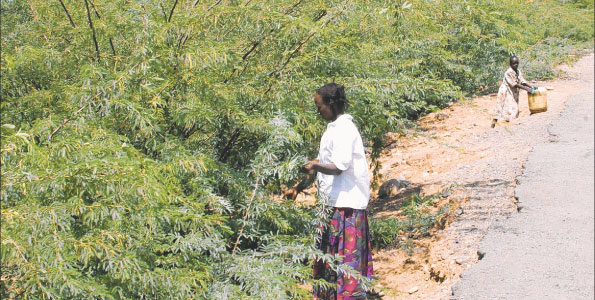By Winnie Kamau
Imagine having plenty of food but all of it turns out rancid to wild animals hence choking the forests. Invasive species as scientist from Kenya Forest and Research Institute(KEFRI) call them, are plants that were introduced into the forests and have a tendency to spread and cause damage to environment, human economy or human health.
The invasive species in forest areas are heavy seeders and have the ability to spread over several life cycles and displace indigenous plants. They have an alarming reproductive capacity where they reproduce without seeds, have short flowering periods and out compete indigenous species and colonize the sites
Renowned KEFRI Research Scientist Dr. Jared Mullah. raised a red flag on the invasive plants during the first Kenya’s Water Tower Protection and Climate Change Mitigation and Adaptation , workshop held in Kisumu. Dr. Mullah noted with a lot of concern that they were trying to sensitize farmers living near the forests whom many times depend on the woody invasive species yet are harmful to the environment. Dr. Mullah pointed out that “Most invasive plants were introduced for horticulture and wood purposes but globalization has led to massive expansions and the world is experiencing more invasive species than before.”
Jane Wamboi Snr. Scientist at Kenya Wildlife Service noted with grave concern that second after poaching are the invasive plants which are not only destroying the ecosystem but also harmful to the wildlife “It is a major concern in conservation of wild animals since the plants grow but the animals cannot graze because they are harmful”.
A recent report by Will Knocker of Wildlife Direct showed how the Nairobi National Park had been invaded by a dreaded invasive weed Parthenium which traces its origins to South America. Knocker notes that Parthenium weed has unpalatable leaves and causes mouth blisters on grazing animals in addition the weed taints the flesh and milk of grazing animals which causes disruption to the food chain.
The invasive species compete with native species for resources including light, food, water and space. They also alter the ecosystem structure and disruption of ecosystem functions like energy, water, minerals and organics. They change biotic interactions and ecological networks, disrupt ecosystem services causing environmental degradation.

Some of the invasive plants introduced for good but have turned out to be a thorn in the flesh is the famous Mathenge tree (Prosopis Juliflora) was introduced during the Moi regime to help in desertification while the hyacinth was a beautiful flower plant introduced by a Nun in Kisumu who let it grow in a pond and has since spread. Chesamiest (Cestrum aurantiacum )invading cypress plantation is poisonous to livestock and human was introduced by colonial settlers but now is used as live fence in Kuresoi.
Dr. Mullah noted that, “Invasion occurs where illegal activities like logging or charcoal burning it invades where the forest has been disturbed” adding that there’s urgent need to manage the plant invasion by removing and destroying the plants in order to restore the destroyed ecosystems.
This was objected by renowned Herbalist and Scientist Prof. Elijah Biamah who said, “We need to look at the positive and negative side of the invasive plants” giving an example of a good invasive species “Kanunga is good in firewood in Malagat forest in Mau”
Prof. Elijah noted that he also gets his medicinal herbs from the forests and some are from the invasive plants “My herbs does miracles .” he quips.
There are 622 of Invasive species in the world but one thing stands out is that there is an urgent need to protect the water towers and the wildlife before the invasive plants rule and colonize our land.














